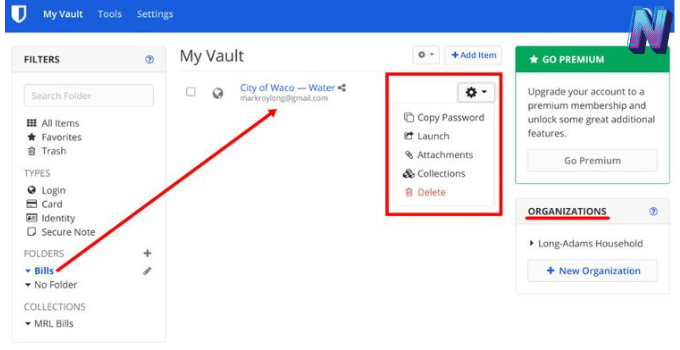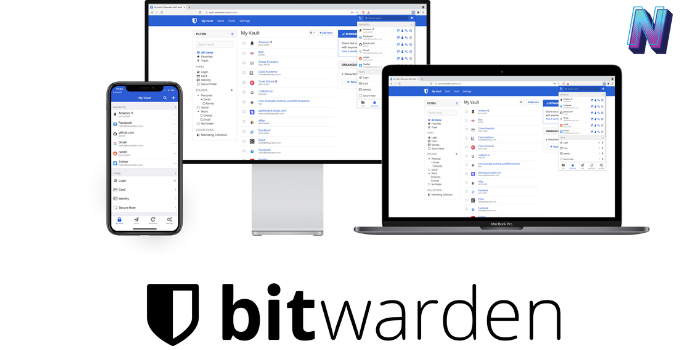[Solved] If you want to enable Bitwarden push notifications on your device, you will get it here as a step-by-step guide. Password managers have revolutionized how we store our passwords online. They’re also great at keeping track of other important information, such as two-factor authentication codes (2FA), recovery options, etc. However, they do lack one key feature—the ability to receive push notifications when changes occur in the vault.
Table of Contents
A lot of users would like this functionality but don’t know where to look. Insecure password managers may not provide it by default because their privacy policy is against providing that service. This means some services will require you to enable them yourself before using them with your secure password manager.
But what about those of us who already use a strong password manager like Bitwarden? How does it work without push notification settings? And finally, how can I get push notifications from my web browser extension? Let’s find out…
Why You Should Use Bitwarden
One of the best features of Bitwarden is its ease of use. Its intuitive interface makes it easy to add new accounts, manage existing ones, view all your stored credentials, edit logins, generate 2FA codes, create notes, etc.
The free version allows up to five devices to sync simultaneously across Windows, macOS, Linux, iOS, Android, Chrome OS, Firefox, Opera, Brave browsers, Vivaldi, Tor, and Microsoft Edge. There’s no limit set on the number of devices you can install Bitwarden apps on.
You can also download offline copies of your data, which is very useful when traveling abroad without internet access.
However, unlike 1Password, there aren’t any paid plans available right now. If you want to pay for more storage space, you’ll need to upgrade to premium.
Another cool aspect of Bitwarden is its support for multiple cloud providers, including Dropbox, OneDrive, Box, ShareFile, iCloud Drive, Amazon S3, Azure Blob Storage, Openstack Swift Object Gateway, GitLab Registry, Elastic Beanstalk, Heroku, MongoDB Atlas, Redis Cache, AWS Cloud9 IDE, DigitalOcean Spaces, VMWare vSphere API Integration, Docker Hub Enterprise, NPM registry integration, etc.
If you’ve been looking for alternatives to popular password management tools like LastPass, KeePass, Dashlane, Keeper, Keepass, Kaspersky SecureKey, Credential Manager, MyKi, etc., then check out Bitwarden too.
How Does It Work Without Push Notification Settings?
When you first open Bitwarden, it asks whether you’d like to run an initial setup wizard. Clicking Yes takes you through a few steps to complete the installation of Bitwarden on your system. Once done, go ahead and launch the application on your computer.
Now let’s take a closer look at how Bitwarden works without push notifications enabled.
On desktop applications, Bitwarden uses cookies to keep track of login details while syncing between different machines. When you sign into Bitwarden on another device, your logged-in session gets synchronized automatically.
In addition, Bitwarden stores encrypted local caches so that your account information doesn’t hit the servers unnecessarily. As mentioned earlier, the only time it communicates with the backend server is during upgrades. Even then, it sends basic user IDs and token IDs over HTTPS instead of HTTP.
Here’s how Bitwarden handles push notifications in practice:
Whenever an update occurs in your vault, Bitwarden sends email alerts via Gmail. A pop-up window displays within seconds after sending emails containing the change logs. At the same time, you’ll see a small badge appear next to the icon in the upper left corner of your screen.

Clicking on the link opens Bitwarden’s mobile app to show the recent updates.
To ensure security, Bitwarden never shares sensitive information with third parties. All communication between client devices and the servers happens behind TLS encryption certificates. Furthermore, it has a strict zero-tolerance policy towards phishing attacks.
Using the Web App With Push Notification Enabled
For people who prefer using Bitwarden exclusively on web browsers, there’s good news too. Just follow these three simple steps below to start receiving push notifications on your phone.
Open Bitwarden on your smartphone. Go to the Account menu under Preferences in General. Then click either Enable Device Sync or Disable Device Synchronization, depending on your preference.
Finally, head back to the Account menu again and scroll down to Find Devices. Here, make sure that Send Alerts is checked. Now, whenever a new item lands in your vault, you’ll instantly receive a push alert on your phone.
Notification on Your Desktop Or Phone Using Email Address and Password
While you can use both methods above to receive push notifications from Bitwarden, it wouldn’t hurt to try setting up push notifications manually using just an email address and a password.
First, visit the website and copy down the following URL: Bitwarden’s official website. Next, go to your preferred text editor and paste the URL inside the box provided. Hit enter, type in your email address, and click Save & Continue.
Next, head to your inbox and verify your email address. Within minutes, you should receive an email saying that verification instructions were sent successfully.
After clicking Verify, Bitwarden will send an SMS code to your phone. Enter the code given on your PC and continue. Finally, you’ll receive an email stating that you’ve signed up for push notifications. Copy down the secret URL shown in the message body.
That’s it! Now, every time there’s a major change in your vault, you’ll immediately receive a push notification on your phone.
It’s time to change the default!
Unfortunately, even though most password managers offer excellent security measures, many still choose to disable push notifications.
This decision seems reasonable until you realize that hackers can easily steal your passwords from unsecured databases simply by knowing your username and email address. That being said, disabling push notifications doesn’t necessarily mean compromised security.
Allowing push notifications could lead to identity theft since anyone with physical control of your device can gain unauthorized access to your accounts. For example, someone sitting beside you on public transportation can swipe your credit card or bank PIN numbers using Wi-Fi sniffers. Similarly, malicious software running in the background of your laptop could also secretly read everything written on the clipboard.
Therefore, enabling push notifications is crucial to protecting your digital assets. So why isn’t everyone doing it yet? Well, here’s hoping that Bitwarden helps answer that question.
Have you used Bitwarden recently? Did you ever miss having push notifications? What was holding you back initially? Is changing the default enough reason to convince others to give it a shot? Please share your thoughts with us in the comments below.
I hope you loved the content. If you want to know about the Data Collection Apps for Special Education Teachers, you can check them out.


